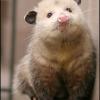-
Welcome to the eG Forums, a service of the eGullet Society for Culinary Arts & Letters. The Society is a 501(c)3 not-for-profit organization dedicated to the advancement of the culinary arts. These advertising-free forums are provided free of charge through donations from Society members. Anyone may read the forums, but to post you must create a free account.
Food Shutter Bug Club (Part 1)
-
Similar Content
-
- 217 replies
- 86,240 views
-
- 1,294 replies
- 222,637 views
-
- 2,108 replies
- 354,207 views
-
- 1,924 replies
- 364,634 views
-
- 9 replies
- 2,468 views
-
-
Recently Browsing 0 members
- No registered users viewing this page.






Recommended Posts